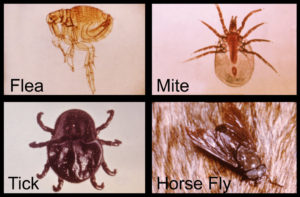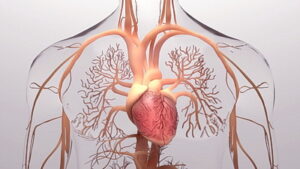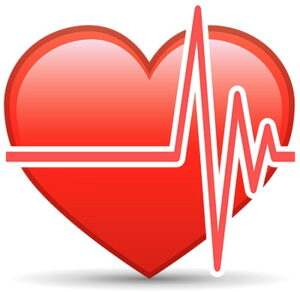Climate Change – An Overview
The phenomenon of climate change has existed since the beginning of time. However, the way it has evolved since the late 19th century is really
alarming.
On the one hand, the industrial revolution has truly transformed how we live today, but on the other hand, it has affected our climate. The exponential rise in greenhouse emissions was caused by rapid industrialization, which is the main culprit behind climate change, also termed global warming.
The progression of technology has helped us to better discern the evidence of this environmental effect. We are now able to see a clearer and bigger picture of the consequences of climate change, all thanks to Earth-orbiting satellites and many other similar technological developments. This is posing a real threat to the existence of life on planet earth and it is substantiated by a compelling body of evidence.
 Global Temperature Rise: The average temperature of the planet has risen about 1 degree Celsius in the last 100 years or so. Scientists have inferred that most of the warming has predominantly occurred in the last four decades. The rise of a single degree Celsius might not sound bad when we consider it as a localized temperature change. But globally, this temperature rise has already instigated many problems.
Global Temperature Rise: The average temperature of the planet has risen about 1 degree Celsius in the last 100 years or so. Scientists have inferred that most of the warming has predominantly occurred in the last four decades. The rise of a single degree Celsius might not sound bad when we consider it as a localized temperature change. But globally, this temperature rise has already instigated many problems.
For instance, the ice covers in Antarctica, Northern Hemisphere, and Greenland are now shrinking at exceptional rates. In the last decade only, the rate of ice mass loss in Antarctica has increased threefold. On the other hand, glacier territories everywhere in the world are quickly receding. Whether it’s the Himalayas, Alps, Alaska or Andes, glaciers are melting at rapid rates.
All this snow melting has exacerbated flooding events. Moreover, the sea level has increased by 8% in the last hundred years due to that. The continuously increasing sea levels are posing a direct danger to many coastal parts of the world. It is estimated that if global warming continues at the same pace, then the entire country (Islands of Maldives) will be completely submerged in the water in the next 30 to 50 years. Climate change has also disturbed the acidity levels of oceans which has put marine life in great jeopardy.
Climate Change and Our Health
Apart from affecting us indirectly, climate change, if not abated, will soon start to impact us directly by inflicting different health problems. Scientists believe that the fallout of climate change has already started affecting our health in multiple ways. Let’s have a look at the impending health threats posed by climate change.
Cardiovascular Health
Heat waves have already become an element of peak summers in many parts of the world. Moreover, its effect is compounded by increasing environmental pollution. For instance, Ozone is a toxin that protects our ecosphere from harmful UV component of sun rays. This toxin has now permeated into breathing air in the form of smog.
A new research study has substantiated concerns regarding the lethal combination of pollution and high temperatures. The research suggests this rising temperature in the resultant ozone effect might be acting in tandem to worsen cardiovascular health in the US. The study has concluded that the heart rate of US citizens variably drops during those high-temperature summer months.
The decreased heart-rate might not have immediate implications, but it increases the chances of a heart attack. Scientists haven’t found a direct link between rising temperatures and heart-rates; however, the ozone and high temperature likely affect the autonomic nervous system that is responsible for heart-rate regulation.
Allergies are on the Rise
It has also been noted that allergies are on the rise in every part of the world. Experts believe that rising carbon dioxide levels in the environment combined with warming temperatures are the main reason behind the prevalence of allergies.
The increased instances of allergies are also linked to the detrimental effects of climate change on botanical growths. Multiple studies point out that plants are flowering earlier than normal. Moreover, the total pollen production has increased in the last couple of decades. These distorted patterns have subsequently aggravated human allergy symptoms.
Vector-Borne Disease Spread
The propagation of different vector-borne diseases is facilitated by climate change. Increased temperatures and rising rainfall rates have created an ideal landscape for many vector-borne diseases to proliferate all across the globe. It is a scientifically proven fact that many insects responsible for spreading vector-borne diseases nourish better in hotter temperatures and damp environments.
Food Safety
Food safety is directly threatened by climate change. Warm air temperatures promote the growth of food-related bacteria. This means the instances of food poisoning will only increase over time. Additionally, the high traces of carbon dioxide can have adverse effects on the levels of macro and micronutrients in staple crops of rice, wheat, and potatoes. Lastly, the acute droughts derived by global warming will make the availability of food a big challenge in different parts of the world.
Global warming has increased sea surface temperatures. It is believed that warmer sea surfaces eventually culminate into increased mercury levels in marine life. In other words, if the recent climate change continues, then very soon we will no longer be able to devour on favorite seafood. A fish naturally contaminated with a high mercury level is not edible.
Climate Change also Affects Mental Health
Rising temperatures also worsen the condition of individuals who are already suffering from mental illness. A study has found that having a pre-existing mental ailment increases the risk of death during heat waves by three times. People on medications with disturbed temperature regulations are more at risk of fatal results of heat waves.
It is blatantly clear that climate change is affecting our existence on this planet from many aspects. It is high time that we change our lifestyles in individual and collective capacities to minimize greenhouse emissions. Increasing our dependence on renewable energy and recycled material can bear fruits through the means of reducing the effects of destructive human activity on the climate.



 Disrupting your regular diet and going overboard with overeating is pretty easy. However, its implications can be far-reaching. For instance, it can waste all the progress you made through exercise. Moreover, it can make you more vulnerable to many unwanted health conditions.
Disrupting your regular diet and going overboard with overeating is pretty easy. However, its implications can be far-reaching. For instance, it can waste all the progress you made through exercise. Moreover, it can make you more vulnerable to many unwanted health conditions. 









 Photo
Photo


 The relationship between medical cannabis and psychosis is a heated issue. Despite the fact that many research studies have been conducted on how cannabis affects the human brain and if the drug can be used to treat or manage certain mental health issues, scientists have been unable to reach a definitive conclusion. This is mainly because the research studies have provided mixed results.
The relationship between medical cannabis and psychosis is a heated issue. Despite the fact that many research studies have been conducted on how cannabis affects the human brain and if the drug can be used to treat or manage certain mental health issues, scientists have been unable to reach a definitive conclusion. This is mainly because the research studies have provided mixed results.



